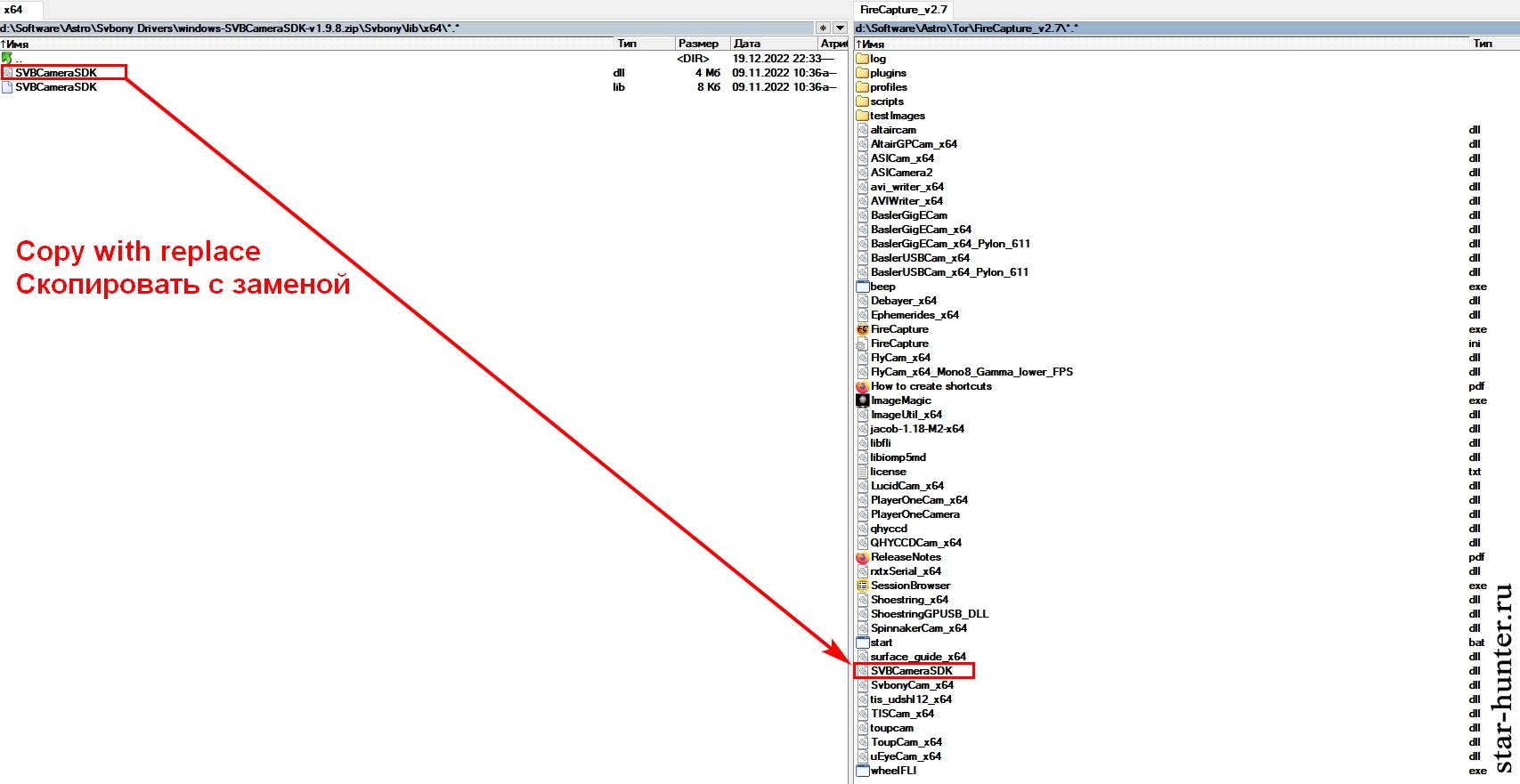Svbony provided me with a Svbony SV705C color astronomical camera based on a Sony imx585 sensor for testing. This is a widescreen sensor with 4K resolution (3856 x 2180) and 1\1.2″ diagonal, introduced in 2021, which is an improved version of the similar Sony imx485 sensor.
The Svbony SV705C camera is of particular interest for shooting planets, the Moon, the Sun, including for creating videos in 4k resolution. Low read noise, high resolution, very large sensor, as well as the claimed absence of the sensor’s own glow (“amp glow”) make it also attractive for shooting comets and bright deep sky objects, including EAA (Electronically Assisted Astronomy). The camera does not have active cooling.
Specifications declared by the manufacturer
| Model | SV705C |
| Sensor | IMX585 |
| Total Pixels | 8.3 Mega Pixels |
| Diagonal | 12.85mm |
| Max Resolution | 3856×2180 |
| Pixel Size | 2.9μm X 2.9μm |
| Chip Size | 11.2mm×6.3mm |
| Frame Rate | 45FPS |
| Shutter | Rolling shutter |
| Exposure Range | 32μs-2000s |
| Readout Noise | 6.5e~0.7e |
| QE Peak | ≈90% |
| Full Well | 38k e |
| ADC | 12 bit |
| ROI | YES |
| BIN | 1X1 2X2 |
| Digital noise reduction | HCG |
| Compatible OS | Windows , Linux OS Raspberry Pi,Mac os, Chrome os |
| Caching | 128M |
| Guiding Port | ST4 |
| Data Port | USB3.0 |
| Adapter | 1.25″/2″/ M42X0.75/CS/C |
| Back Focal Length | 6.5mm/12.5mm |
| Protective Window | AR Coating |
| Working Humidity | 30%-80% |
| Storage Humidity | 20%-90% |
| Operating Temperature | -10℃ to +50℃ |
| Storage Temperature | -20℃ to +60℃ |
| Net Weight | 575g |
| Product Size | Ø58×38.3mm |
The camera sensor Svbony SV705C has a high sensitivity to near infrared rays, so the protective glass in front of the matrix without IR-cut coating. This is done so that you can use the camera to shoot in several spectral ranges – visible (with an IR-cut filter) and infrared (with an IR-pass filter). There are three camera configuration options – without an IR-cut filter, with an IR-cut filter, or with a 685 nm IR-pass filter.
What in the box, general view
The camera is delivered in a cardboard box. There are few inscriptions, there is one sticker with markings.
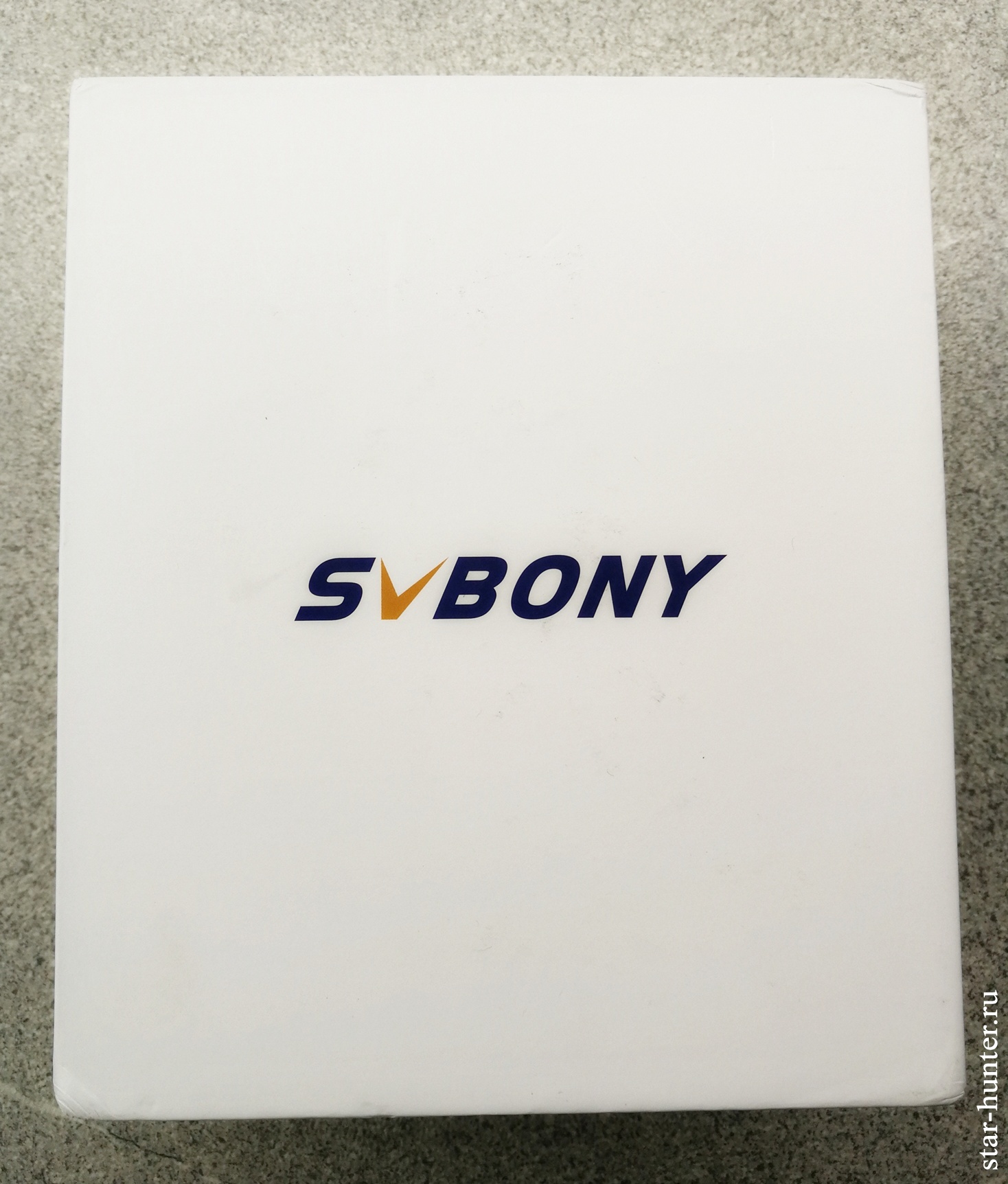
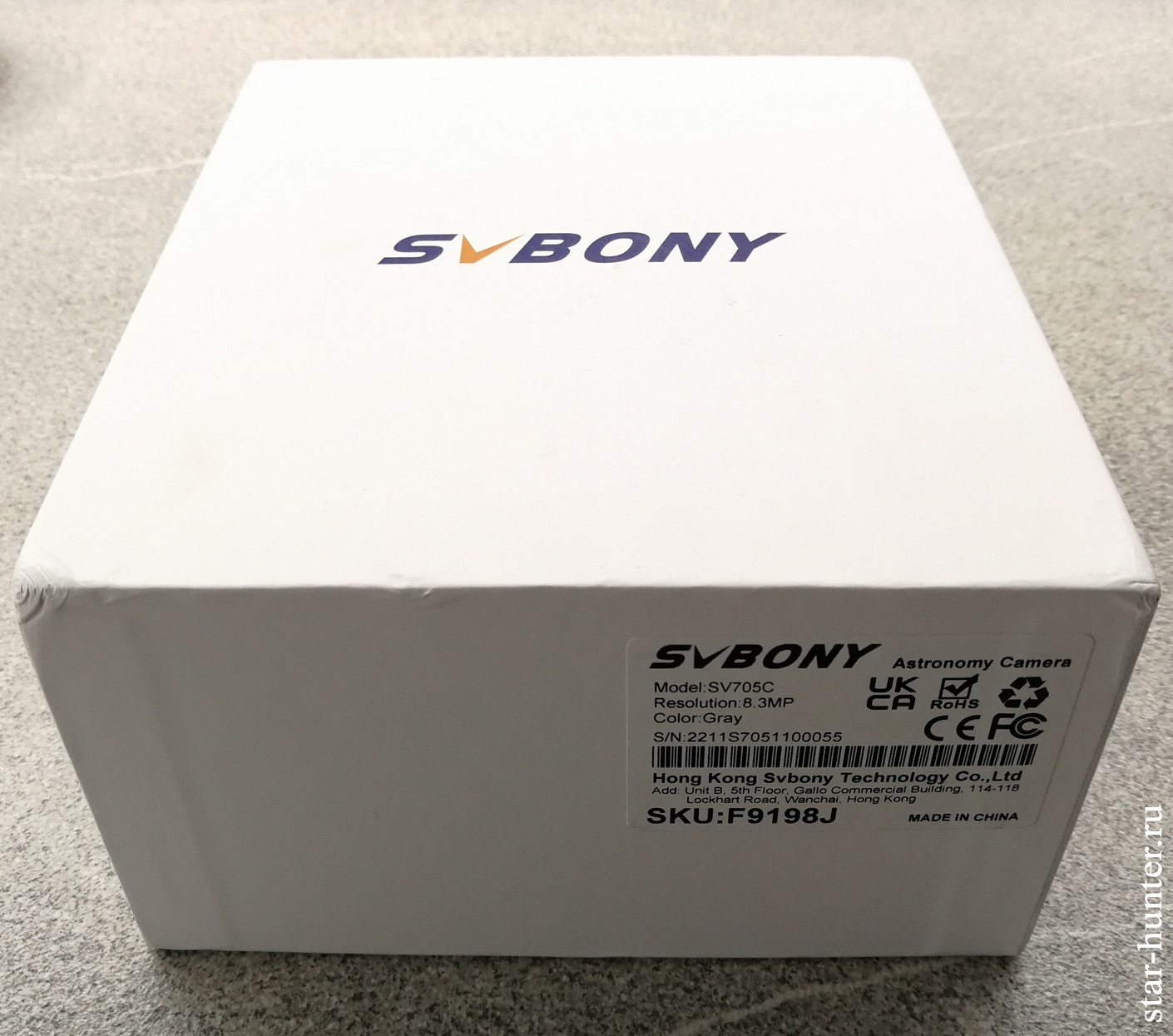
The camera package is the same as that of Svbony SV505C.
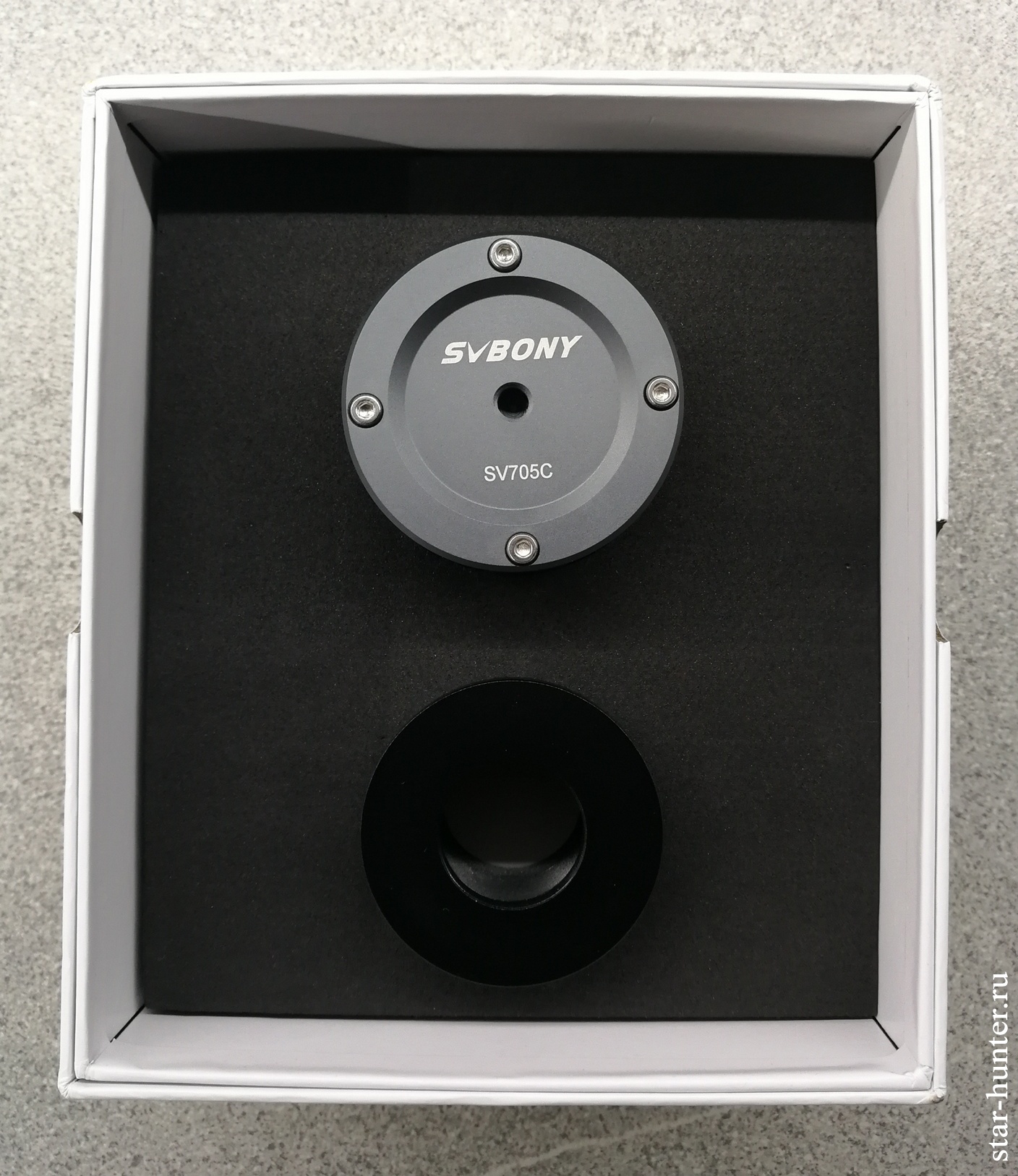
What is in the box:

Package Includes:
- 1 * Svbony SV705C Planetary Camera
- 1 * USB 3.0 Cable
- 1 * ST4 Guiding Cable
- 1 * M42-CS Adapter Tube
- 1 * T2 Adapter
- 1 * 1.25” T-Adapter
- 1 * 2” Dust Cover
- 1 * User Manual
- 1 * Cleaning Cloth
Good package, but I personally lacked only a 1.25-inch dust protective cover. In principle, it was also possible to put a CS lens in the kit for shooting meteors, it is inexpensive. I have no complaints about the quality of the camera and components.
The body of the camera is metal, size 58 x 44 mm, weight 0.16 kg. There are USB 3.0 and ST4 connectors on the side of the case. In the back of the case there is a 1\4″ thread for mounting the camera on a tripod or other fastener. In front of the camera, you can see the imx585 sensor, as well as the protective glass. The matrix and protective glass are clean from the inside, without dust. In the process of unpacking, dust managed to accumulate on the outside, so I recommend installing the 1.25″ adapter and the IR-cut filter as soon as possible and do not remove them unnecessarily, since dust on the IR-cut filter interferes less when shooting than on the protective glass.
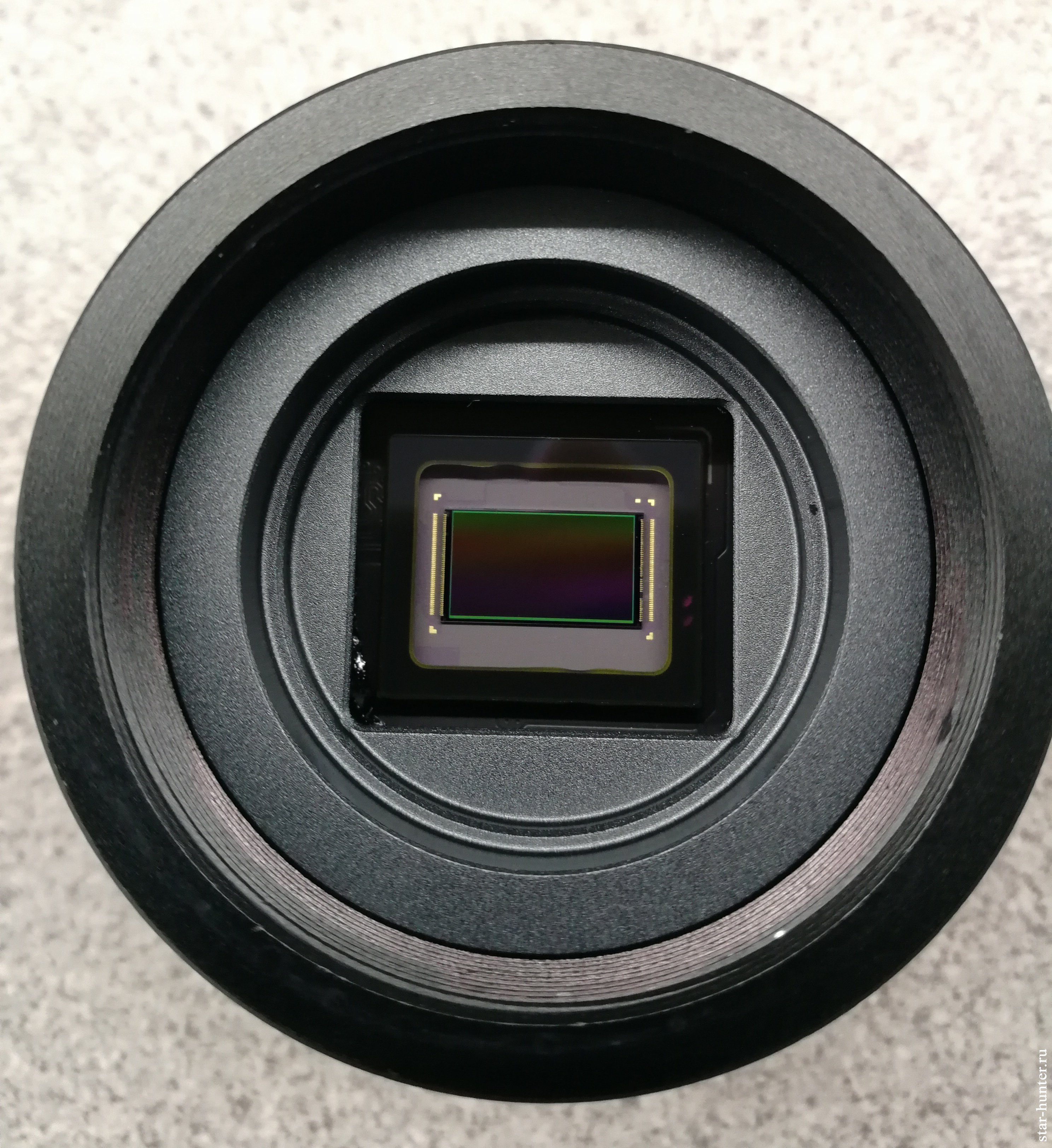
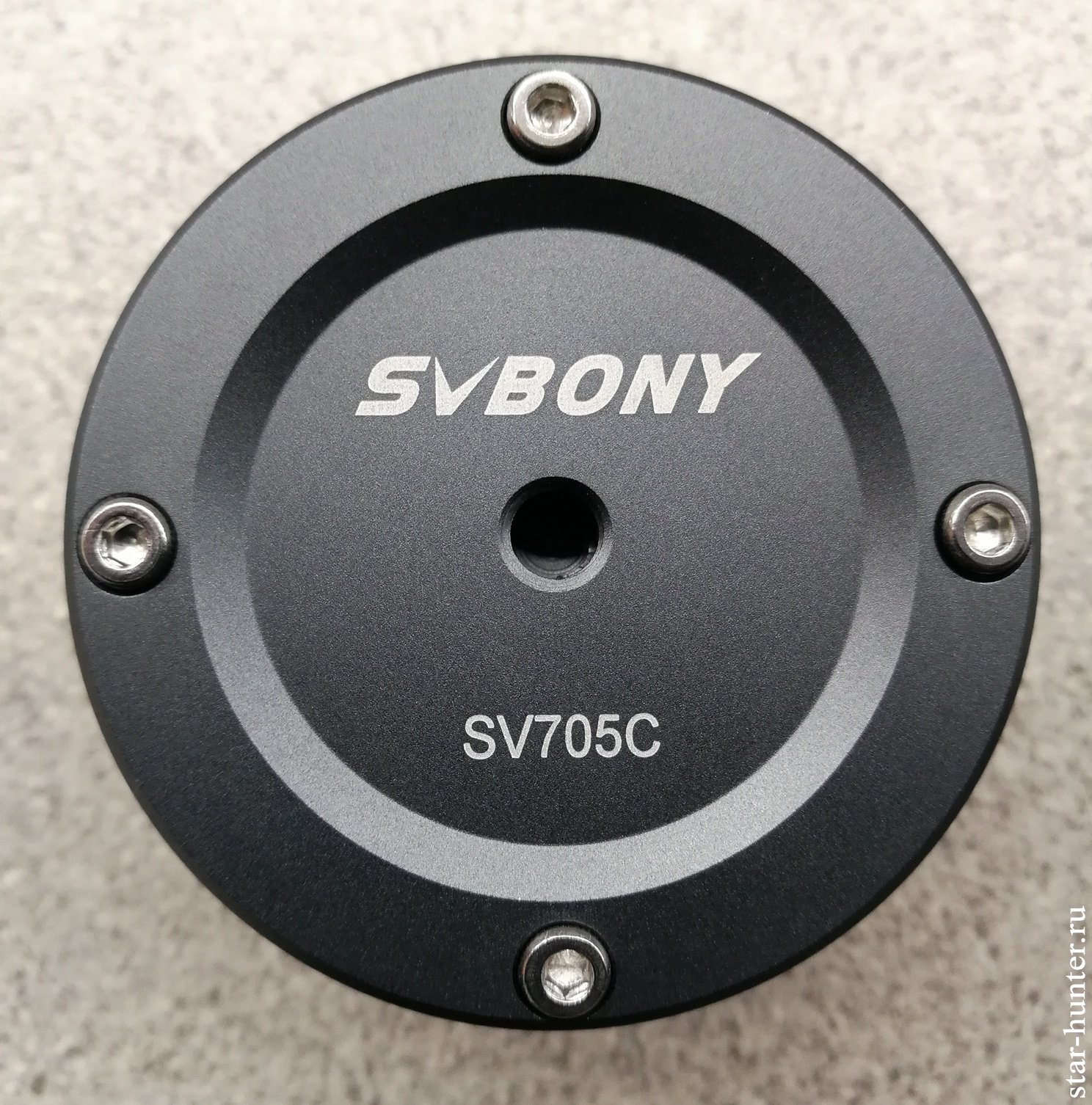
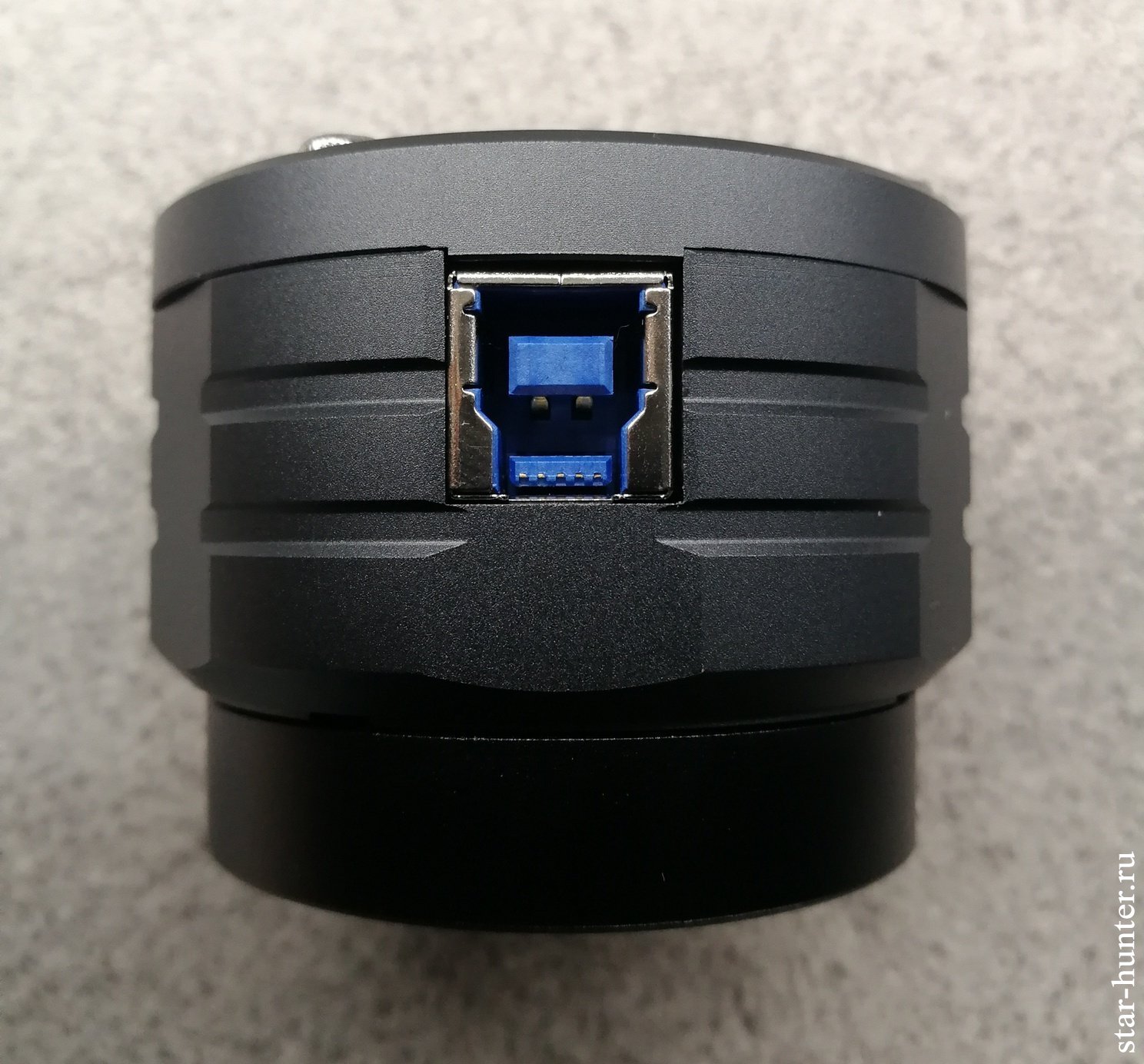

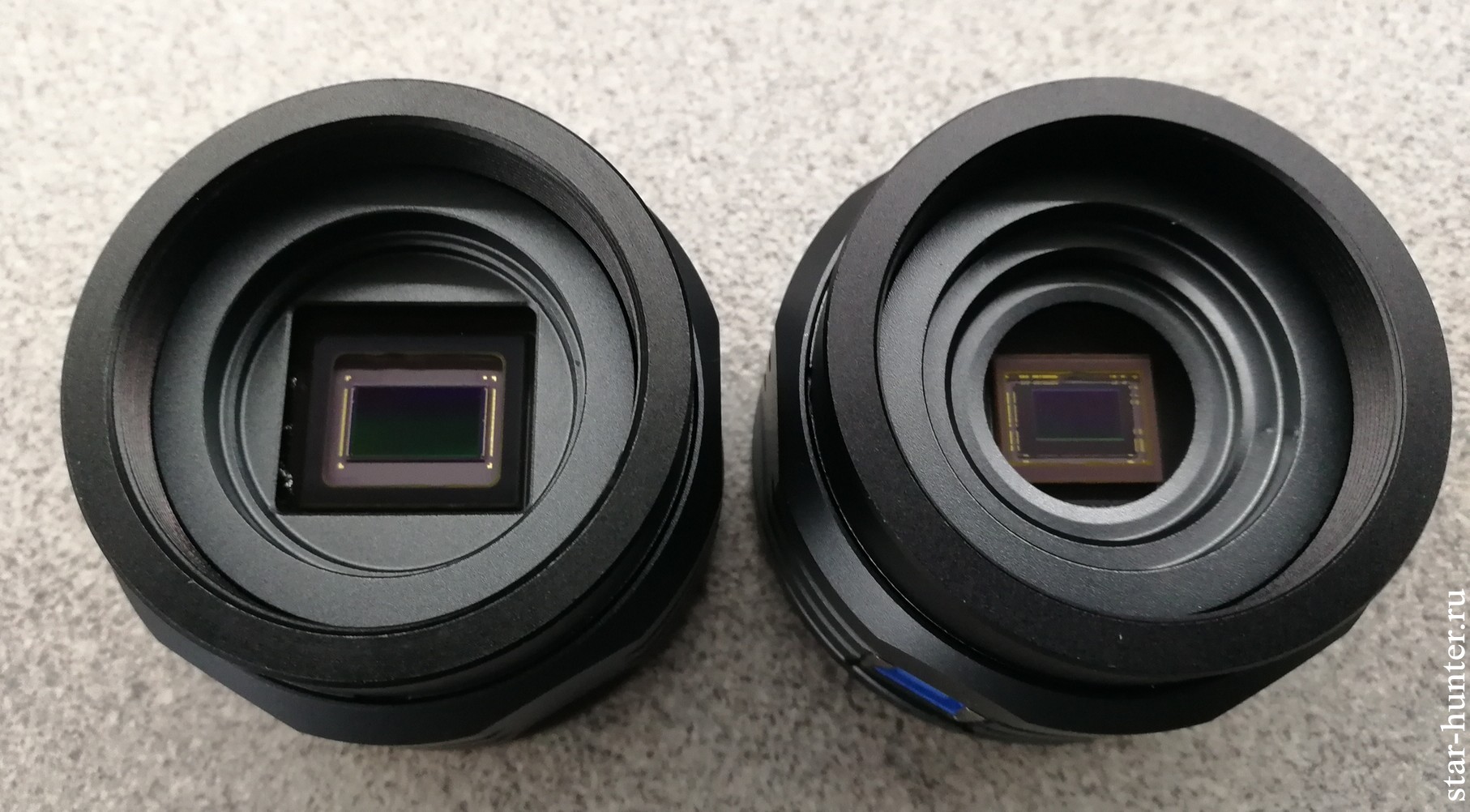
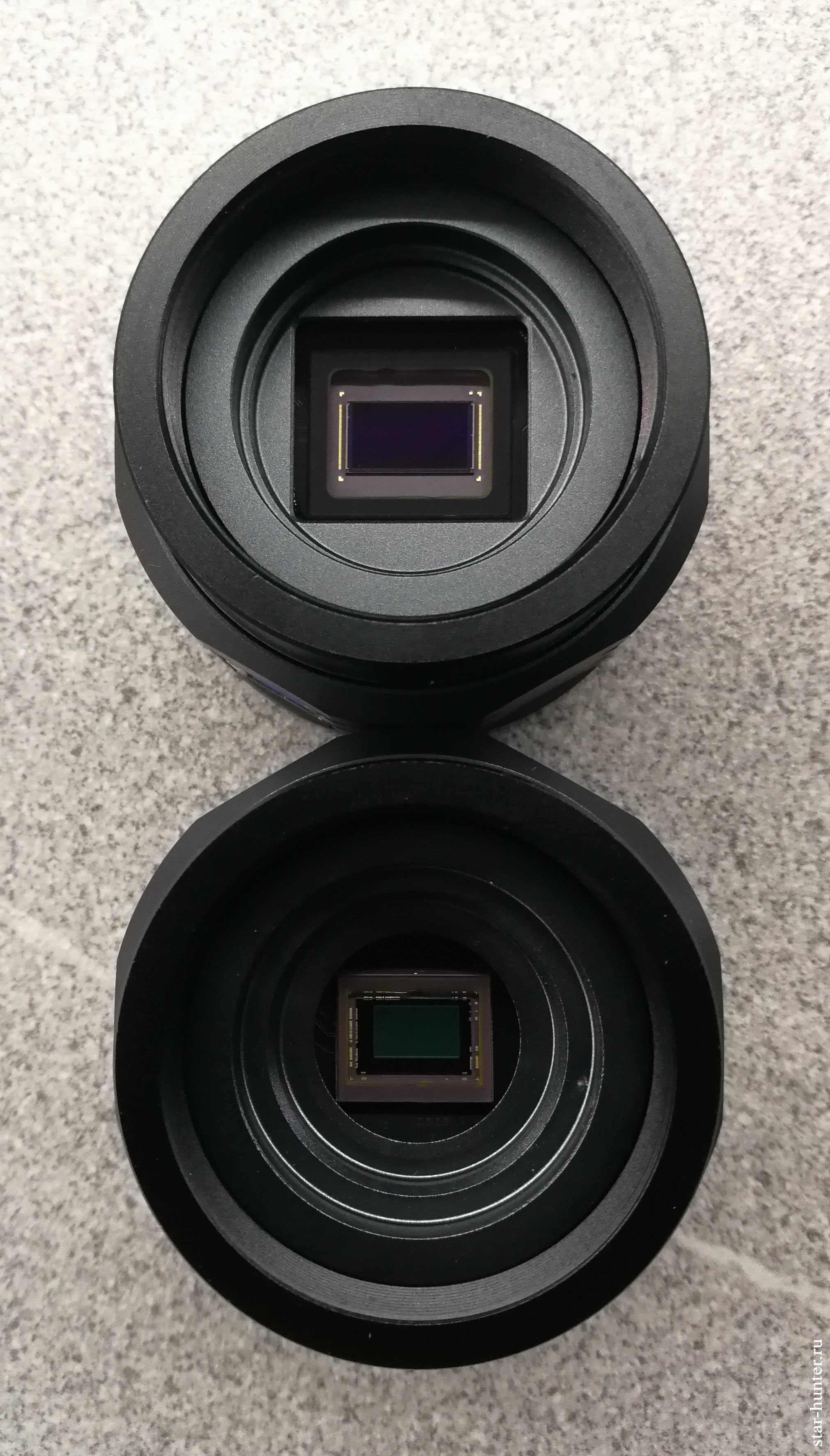
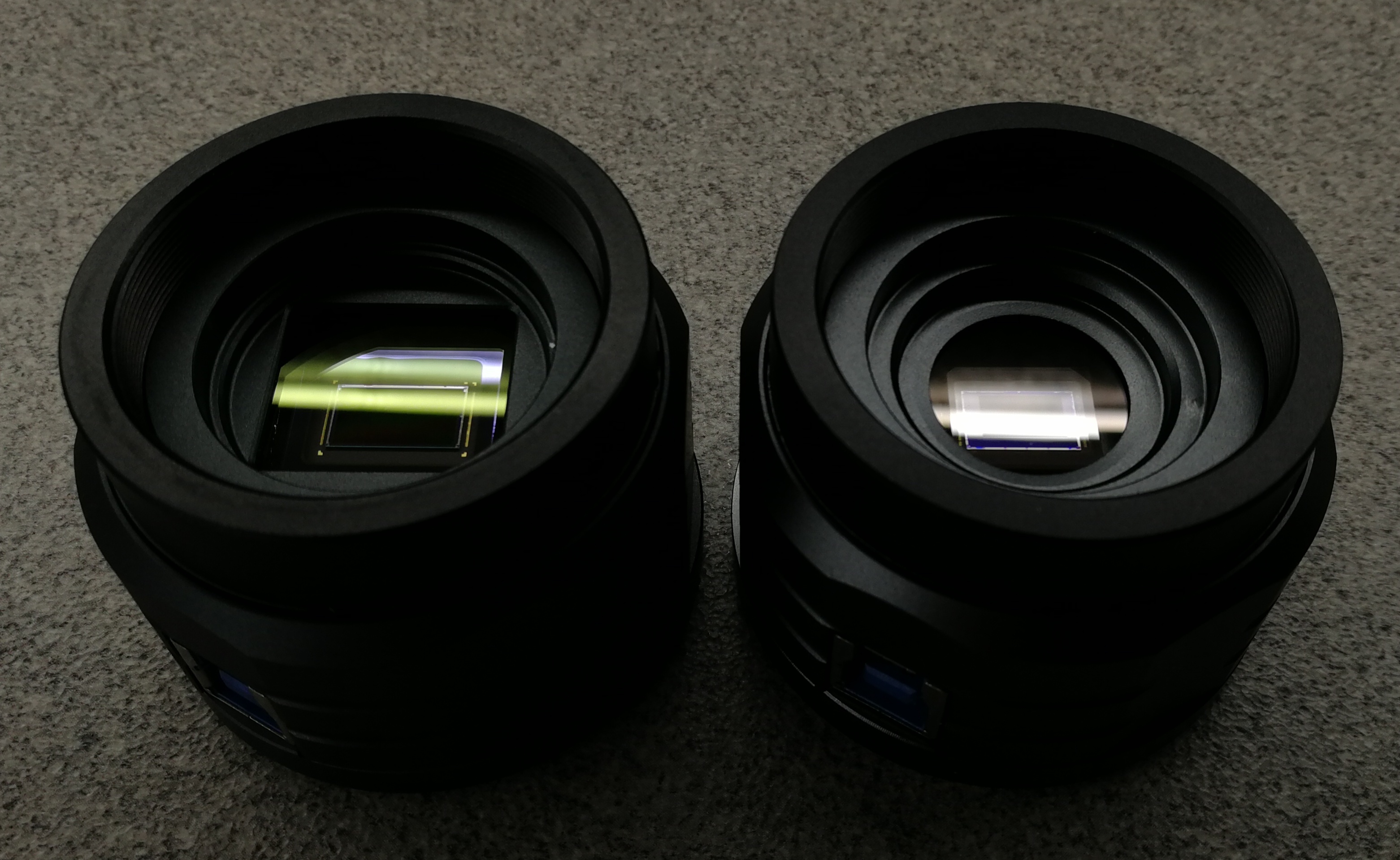
Camera software and testing
The manufacturer claims that the camera will work under Windows, Linux OS Raspberry Pi, Mac os, Chrome os operating systems. Test computer specifications – Intel i5-9300H, 8 GB RAM, 512 GB SSD, USB 3.0 port, Windows 10 x64. Before connecting the camera, I downloaded and installed the drivers from the official Svbony website. To test the camera, I used SharpCap versions 4.0.9226 and 4.0.9472 (64 bit) and got an error when detecting the camera. The camera started only after copying the SVBCameraSDK.dll file from the SDK archive to the SharpCap working folder. After that, there were no problems with detecting the camera in SharpCap, the camera works stably and without crashes. The situation is similar with the FireCapture software.
The maximum image resolution when shooting is 3856 x 2176. The maximum frame rate is as advertised (about 45.6 fps), but please note that this will require a USB 3.0 port in the computer and a fast SSD drive. On devices with a USB 2.0 port and/or HDD storage, the frame rate will be much lower.
There is support for SER video format. A wide variety of camera settings are available, including per-channel white balance adjustment. Camera temperature is not displayed.
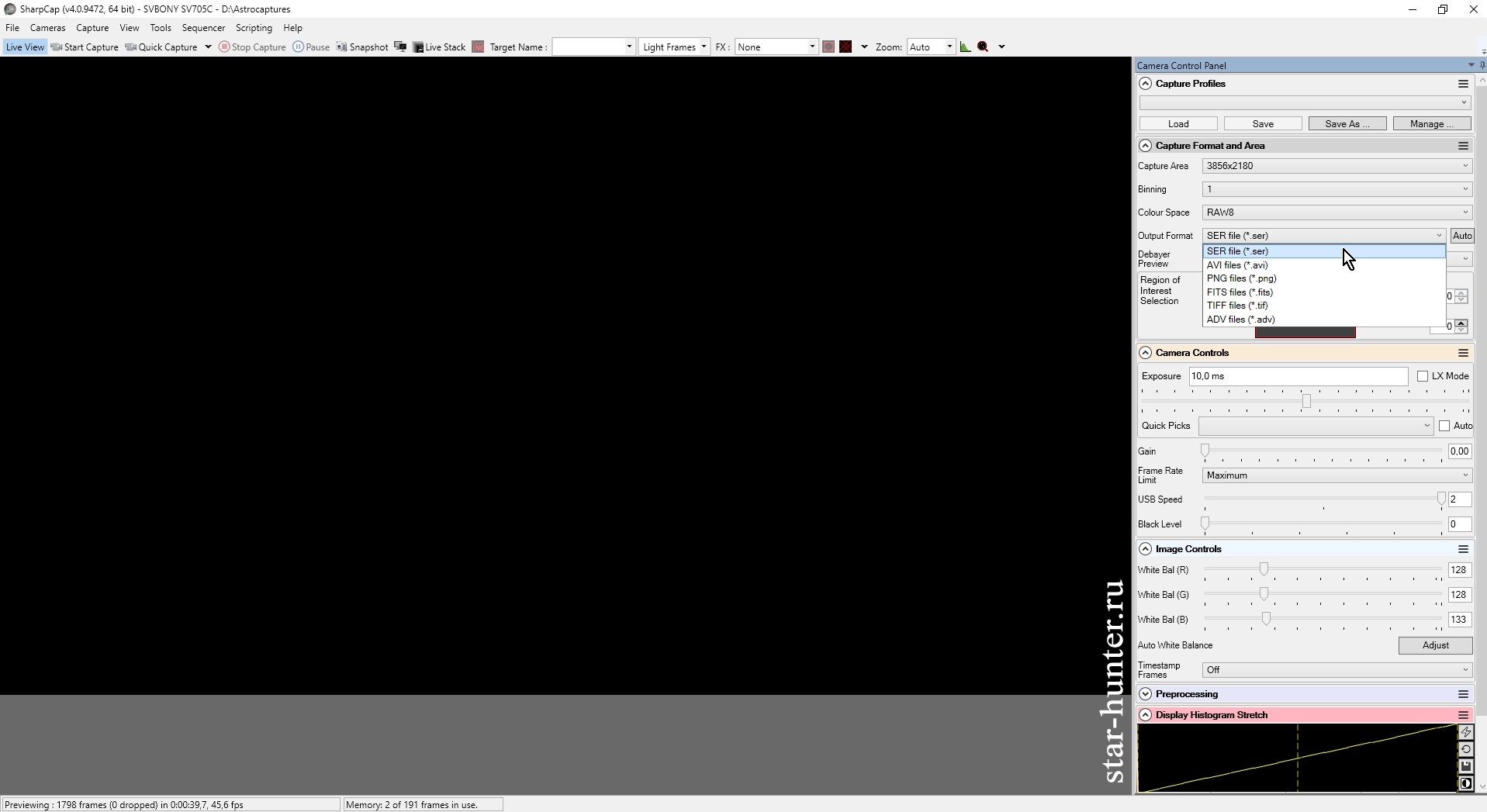

By planets, the camera was tested on the following equipment: Celestron NexStar 8 SE / Celestron Omni XLT 127 telescope, Barlow lens cell NPZ 2x, atmospheric dispersion corrector ADC, extender, IR-cut 1.25″ filter. The camera works nice – I did not find any freezes, skips, or frame drops

Equipment:
-Celestron Omni XLT 127 telescope
-Sky-Watcher AZ-GTi mount
-Barlow lens NPZ 2x
-atmospheric dispersion corrector
-IR-cut filter
-Svbony SV505С и SV705C cameras.
Source videos with PIPP crop are here.

Equipment:
-Celestron Omni XLT 127 telescope
-Sky-Watcher AZ-GTi mount
-Barlow lens NPZ 2x
-atmospheric dispersion corrector
-IR-cut filter
-Svbony SV505С и SV705C cameras.
On the Moon, the Svbony SV705C camera also proved to be excellent – a large matrix and a small pixel allow you to get detailed images and videos of the lunar relief in 4K resolution.
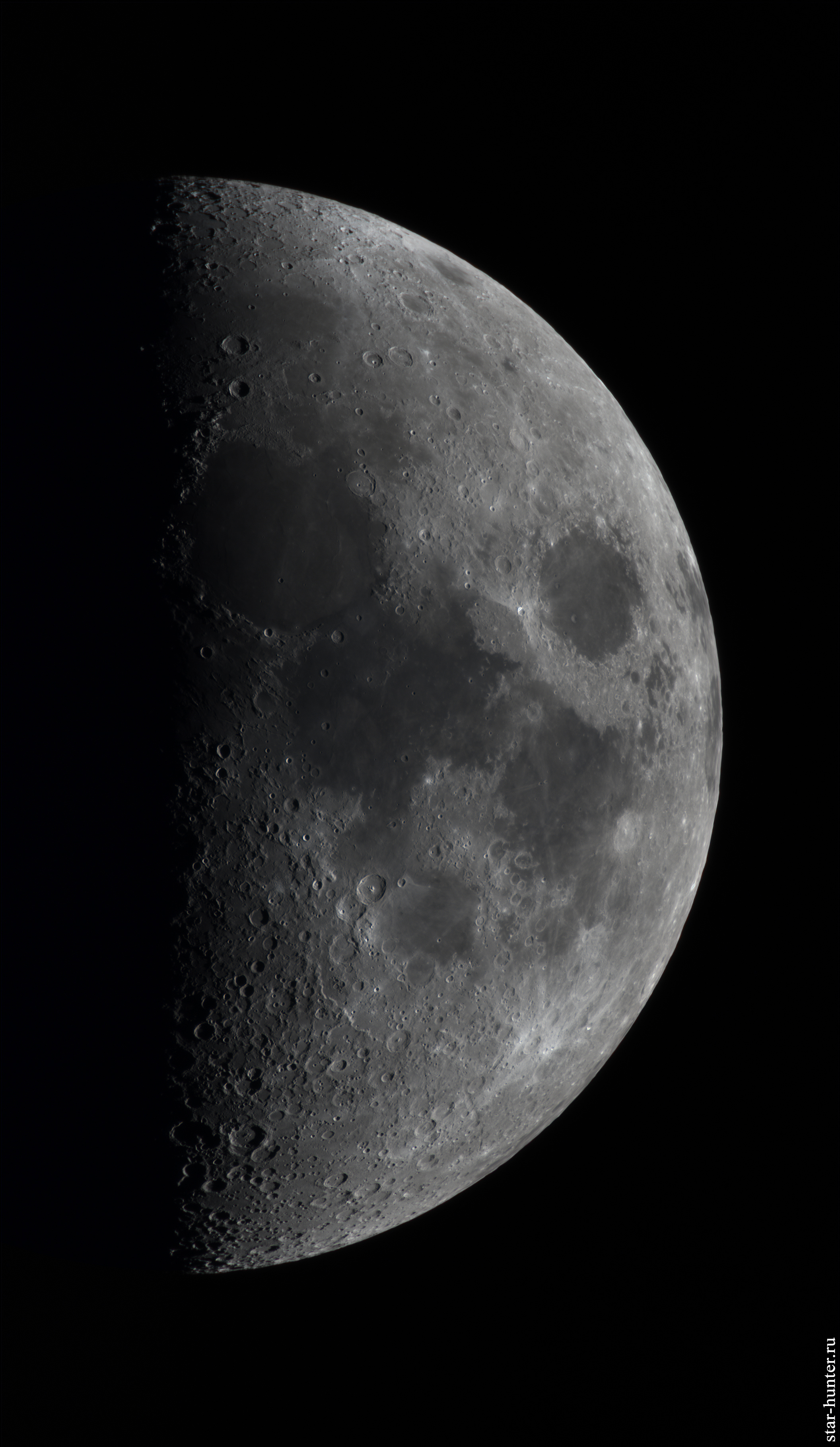
Equipment
-Meade 70 mm Quadruplet APO
-Sky-Watcher AZ-GTi mount
-Barlow lens NPZ 2x
-IR-cut filter
-Svbony SV705C camera.
Processing: stacking of 100 frames out of 2767 in Autostakkert, deconvolution in AstroSurface.
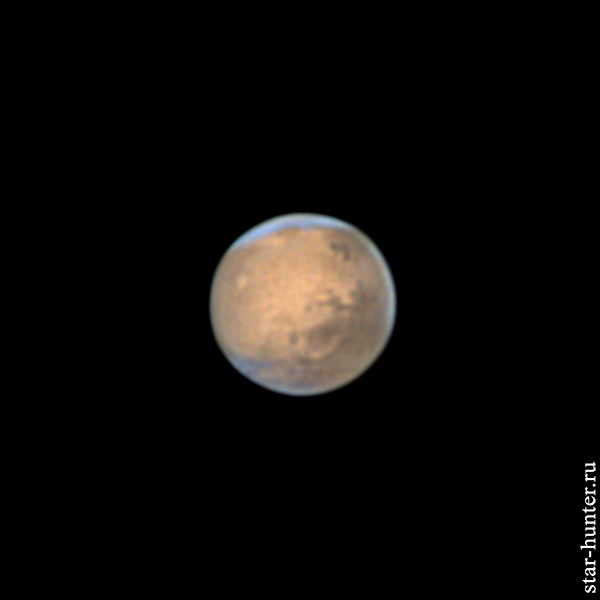
Equipment:
-Celestron NexStar 8 SE telescope
-Barlow lens cell NPZ 2x
-atmospheric dispersion corrector
-extender
-IR-cut filter
-Svbony SV705C camera.
Processing: stacking 1000 frames from 11875 (Autostakkert), wavelets (Registax 6).
Source video and stack are aviable at link.
Also i tested the Svbony SV705C at the Sun (with Herschel wedge and protective filters). I do the processing according to my own method, extracting the green channel from the footage using the PIPP software. I did not find any suspicious artifacts in the image – the camera works exactly as it should.
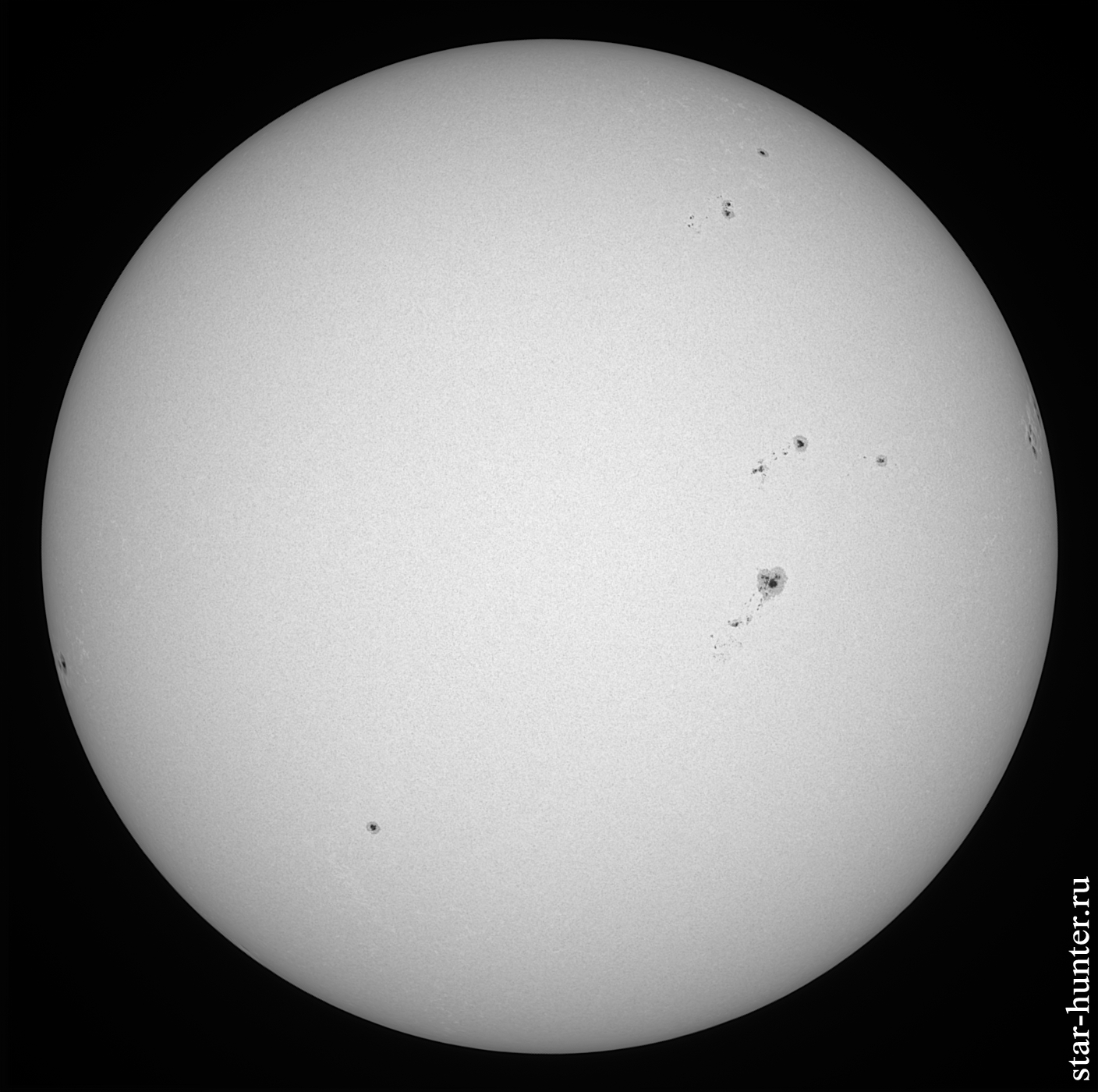
Equipment:
-Levenhuk Ra R66 ED Doublet Black telescope
-Sky-Watcher AZ-GTi mount
-Lacerta Herschel prism
-Baader Solar Continuum filter
-ND3 filter
-Svbony SV705C camera
Stacking 100 frames out of 8469, converting to monochrome in PIPP (green channel), stacking in Autostakkert, deconvolution and wavelets in AstroSurface.
Source color video:
Although the manufacturer declares the complete absence of the sensor’s own glow (“amp glow”), some unevenness of the dark frame at high gain and long exposure is still noticeable – pay attention to the left and right edges of the image. However, these are no longer powerful “torch” like sensors on imx178 or imx183. Below is an example of a frame with a shutter speed of 120 seconds at maximum gain.

I also checked the Svbony SV705C camera on the Orion Nebula M 42 in the short exposure mode (300 ms) using the Meade 70 mm Quadruplet APO telescope (D=70 mm, F=350 mm), the Svbony SV220 dual-band filter and the Sky-Watcher AZ-GTi mount in AZ mode.

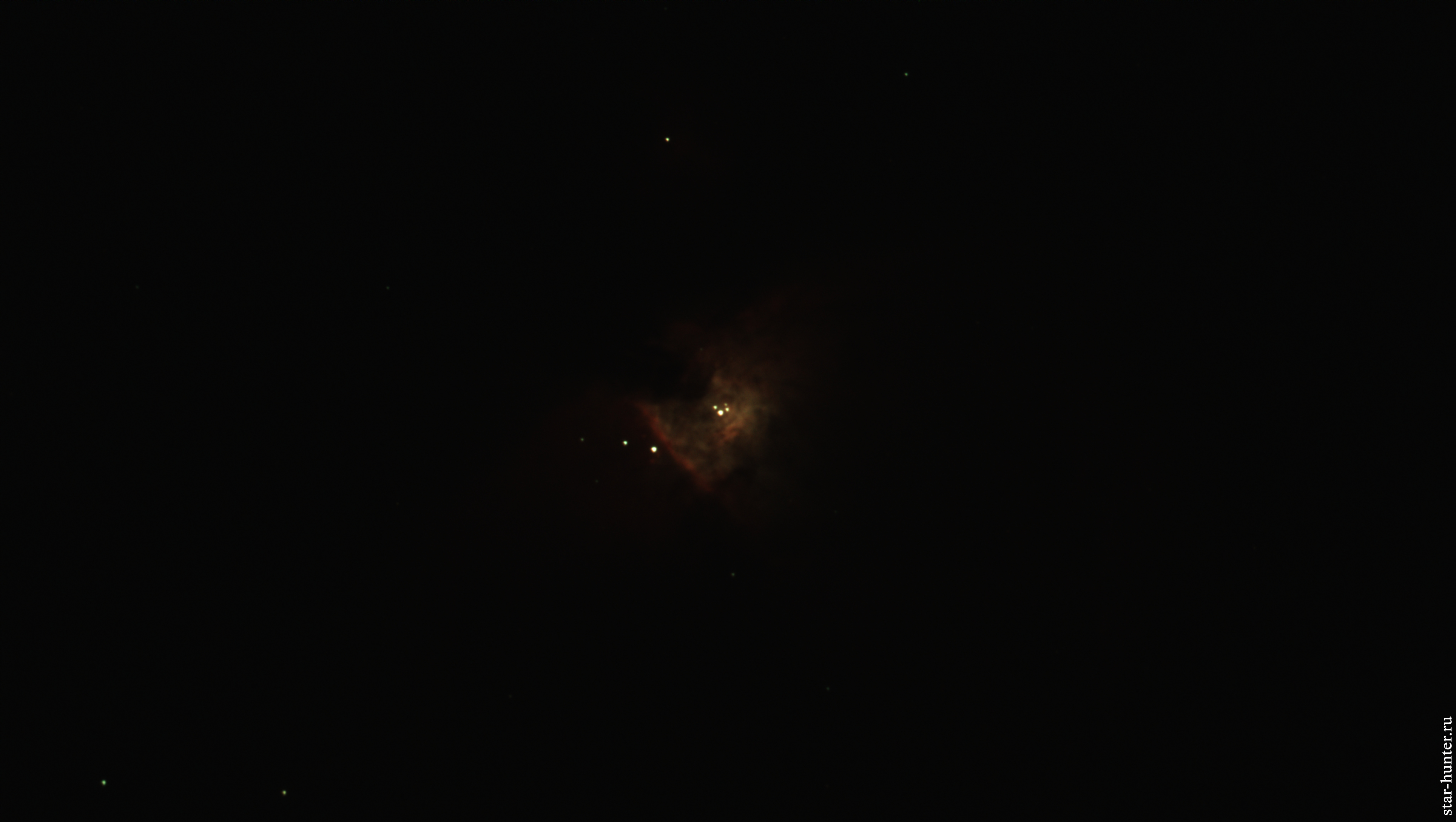

The total exposition was only 0.3s x 155 = 46.5 seconds. Single frame, dark frame and summation result can be downloaded here.
The camera is equipped with an autoguiding port, but I have not yet tested the operation of autoguiding. With CS-mount lenses through the included adapter, the camera works flawlessly – for example, with a 2.5 mm wide-angle CS-lens, you get a circular fisheye, so Svbony SV705C can be quickly converted to all-sky camera for shooting meteors or auroras.
Summary
I liked the Svbony SV705C camera – large sensor, high resolution, good sensitivity, low noise. In my opinion, this camera is perfect for both lunar and planetary capturing and EAA (visual observations on a computer screen). Shooting deep sky objects is also possible, however, please note that without sensor temperature stabilization, the efficiency of dark frame calibration will be lower than that of cameras with a built-in thermostat (for example, SVBONY SV605CC). The disadvantages include the need to manually install the DLL library in SharpCap and FireCapture – I hope this inconvenience will be resolved in the next updates. There is also a very weak “amp glow” of the sensor, but it is negligible and will be completely eliminated with proper calibration.
Have questions? Ask me, I will gladly answer them.
Реклама: ООО “АЛИБАБА.КOМ (РУ)” ИНН 7703380158


